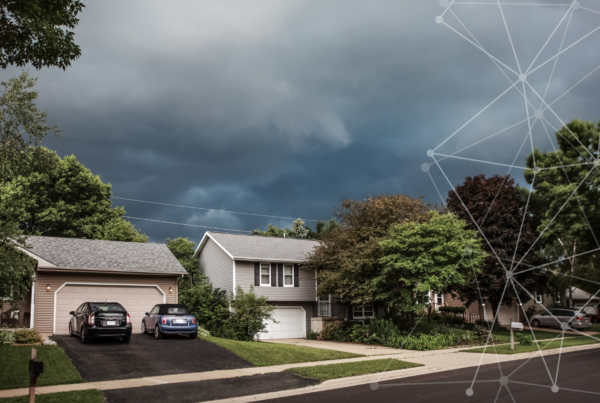
 Housing supply has been a major challenge in Canada, ranking near hot-button issues such as affordability, the mortgage stress test, and more. In fact, many industry professionals say that some of these other issues stem from housing supply.
Housing supply has been a major challenge in Canada, ranking near hot-button issues such as affordability, the mortgage stress test, and more. In fact, many industry professionals say that some of these other issues stem from housing supply.
For instance, in some areas of the country, limited housing supply could be making affordability worse as it creates more of a demand.
It’s a weighty topic, but an important one. And while some housing supply discussions have been put on hold during the COVID-19 pandemic, this is also a good time to sit back and look at the issue from an analytic standpoint.
We’ve compiled industry analysis about housing supply in Canada and what the future might look like.
Housing Supply Challenges and Insights
According to the Canadian Real Estate Association (CREA), the number of existing homes available for purchase in Canada in December was at a 12-year low.
In January, Scotiabank CEO Brian Porter told the Financial Post:
“…we have to make sure that these housing markets are in balance. So, rather than look at the demand side of the equation, let’s look at the supply side. Everybody wants to talk about the demand side without looking at the supply side.”
At the October 2019 Teranet Market Insight Forum, housing supply was a top-of-mind issue for industry panelists.
Tim Hudak, CEO of the Ontario Real Estate Association (OREA), said of housing supply in the GTA: “In 2016, for example, we were building half as many homes as in 2006. … It was like a cruel game of musical chairs. More people chasing fewer and fewer chairs.”
OREA has also put forward a Housing Supply Action Plan, which includes 10 points to “build thousands of affordable homes right across Ontario, reduce costs for first-time buyers, and protect the dream of home ownership for generations to come.” Read it here.
At the Teranet Market Insight Forum Paul Taylor, President and CEO of Mortgage Professionals Canada, also commented on supply, saying, “We just need more of all kinds of supply.”
Mortgage Professionals Canada recently published their 2019 Year-End Report, which also includes analysis on housing supply and more trends.
The Canadian Home Builders’ Association (CHBA) has a website dedicated to housing affordability issues. They have estimated that at current rates, Canada will be about 300,000 family-oriented units short over the next decade.
Among their recommendations for the Federal government to improve and support affordability is committing to work with provinces and municipalities to increase market-rate housing supply.
“We need more of the right kind of housing, in the right places,” the CHBA stated.
“This will help keep prices down for all homes, while also freeing up rental properties as people move into their first homes.”
CHBA also noted that housing supply doesn’t necessarily only mean houses available for purchase, but also more affordable housing, such as social housing.
“…building more social housing is not the same as building more market-rate housing that hard-working Canadians can afford to buy or rent,” CHBA wrote. “We need more of it all.”
In its annual Emerging Trends in Real Estate report, PwC Canada also wrote about supply constraints for 2020.
“Governments must recognize that increased supply can help address the affordability issue and be willing to embrace innovative ways of unlocking a supply-constrained market,” stated Frank Magliocco, National Real Estate Leader of PwC Canada
Some solutions presented in the PwC report included:
- Pursuing transit-oriented development and allowing greater density along existing transit lines.
- Making public lands available through long-term leases to encourage the development of purpose-built rental housing.
- Being more consistent in government policy responses — for example, making it easier to add density through development near new routes and stations.
In its 2020 Housing Outlook report, TD Economics offered analysis into possible explanations for limited supply growth in the resale market. Suggested causes include:
- An ageing population could mean more people are staying in their homes.
- Other economic factors are at play — for example, soft economic conditions in Alberta and Saskatchewan.
- New housing completions are lagging.
- People are moving less in general.
National Bank reported on housing starts in 2019, noting that they declined 2.3% from 2018. Ontario posted the largest unit decline out of all provinces. However, starts increased in two Canadian cities: Calgary and Halifax.
The Housing Supply Challenge
Impact Canada and CMHC recently announced the Housing Supply Challenge to address the issue.
“The Housing Supply Challenge … will result in new ideas and solutions that will help more people find an affordable place to call home,” the Challenge website states.
The Challenge will award $300 million in prizes over five years.
See details about the Housing Supply Challenge here: https://impact.canada.ca/en/challenges/housing-supply-challenge
Finding Supply in Dense Areas
While finding more housing supply is not always possible, some technology can make it easier to do so. For instance, GeoWarehouse subscribers can search for properties on a map and see details about locations of interest — whether they are listed or not.
They can also view demographics information for neighbourhoods to gain a better understanding of who is currently occupying existing residences.
The Map View separates properties by lots, so searchers can easily find vacant lots. It also shows the lot size, which subscribers can use to determine where a property might be appropriate for severing into multiple lots.
Some developers have been targeting unusual property types, such as laneway houses, “pork chop” lot zoning, and tiny homes.
Another option is to search further afield. PWC Canada reported, for instance, that the mortgage stress test regulations caused people to look at communities further from Toronto to find housing they can qualify to buy.
This doesn’t fix the housing supply problem — but it can offer more options, particularly in areas that are more heavily populated.
What do you think is the answer to Canada’s housing supply challenges? Let us know on social media. GeoWarehouse is on Twitter, Facebook, and LinkedIn.
Stay up-to-date on the latest Teranet announcements in our COVID-19 Information Centre: https://www.teranet.ca/teranet-news-categories/covid-19-information/
Leverage your GeoWarehouse property data or become a subscriber today. Visit www.geowarehouse.ca for more information.







